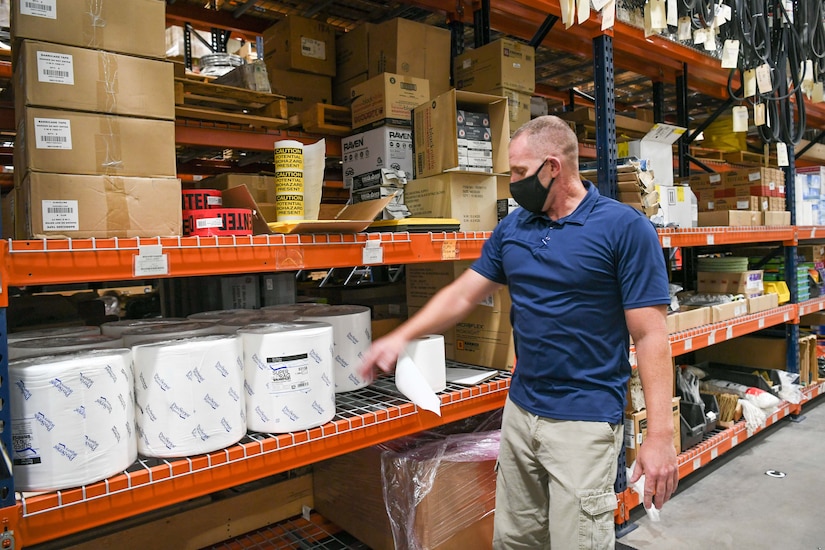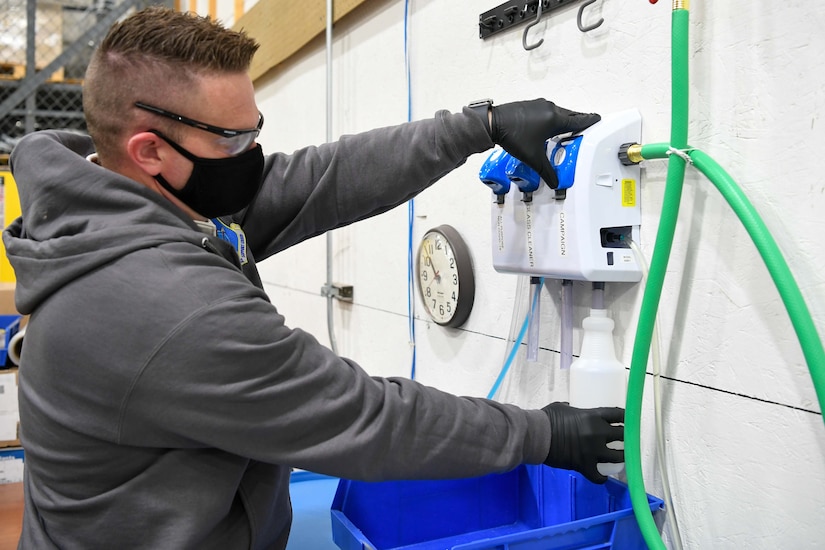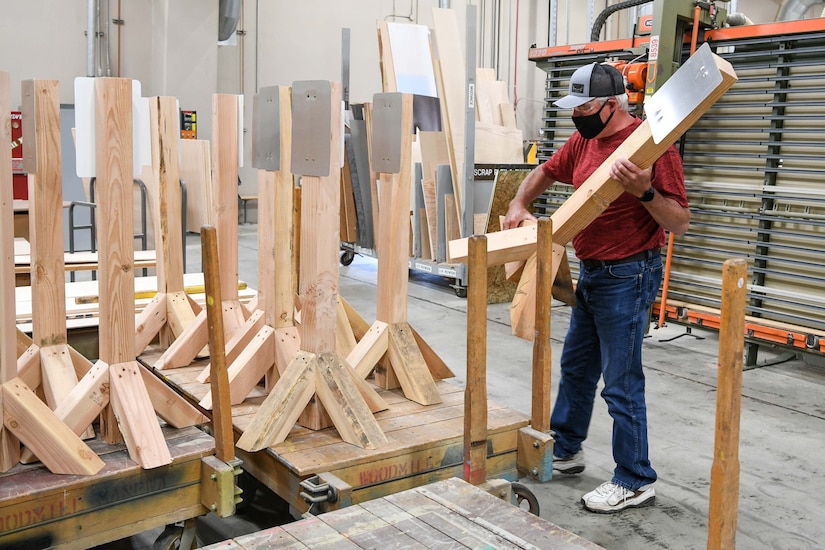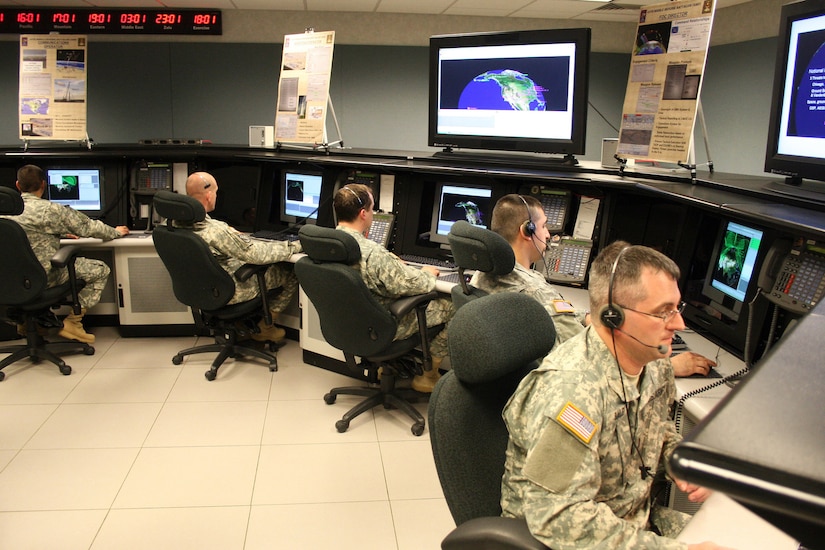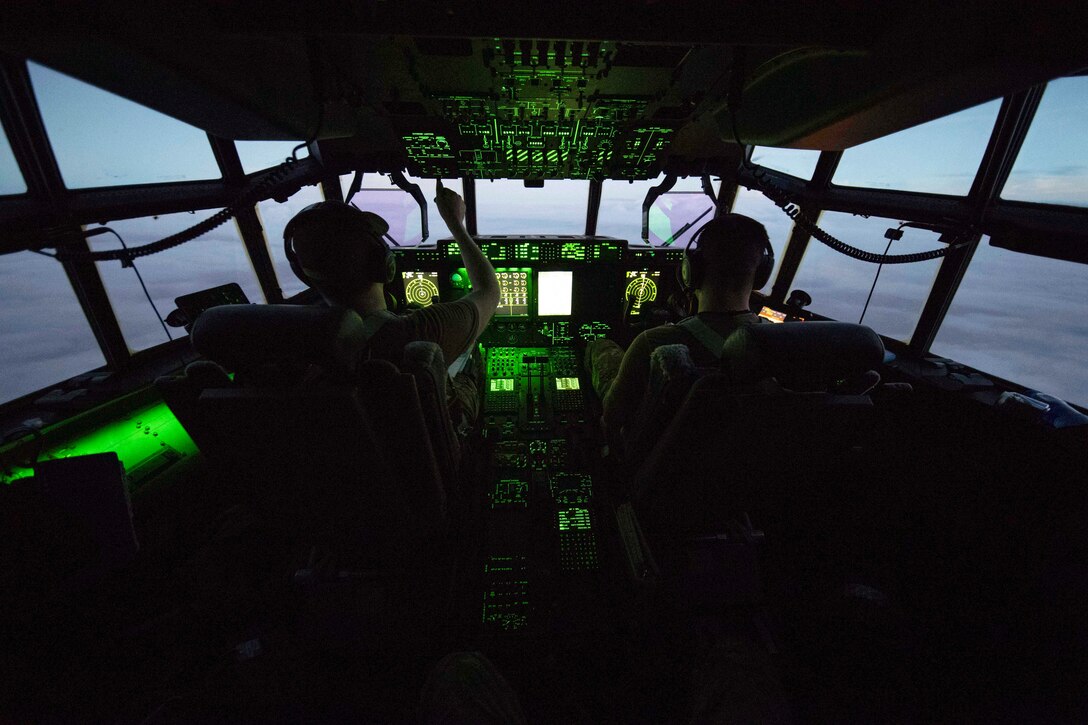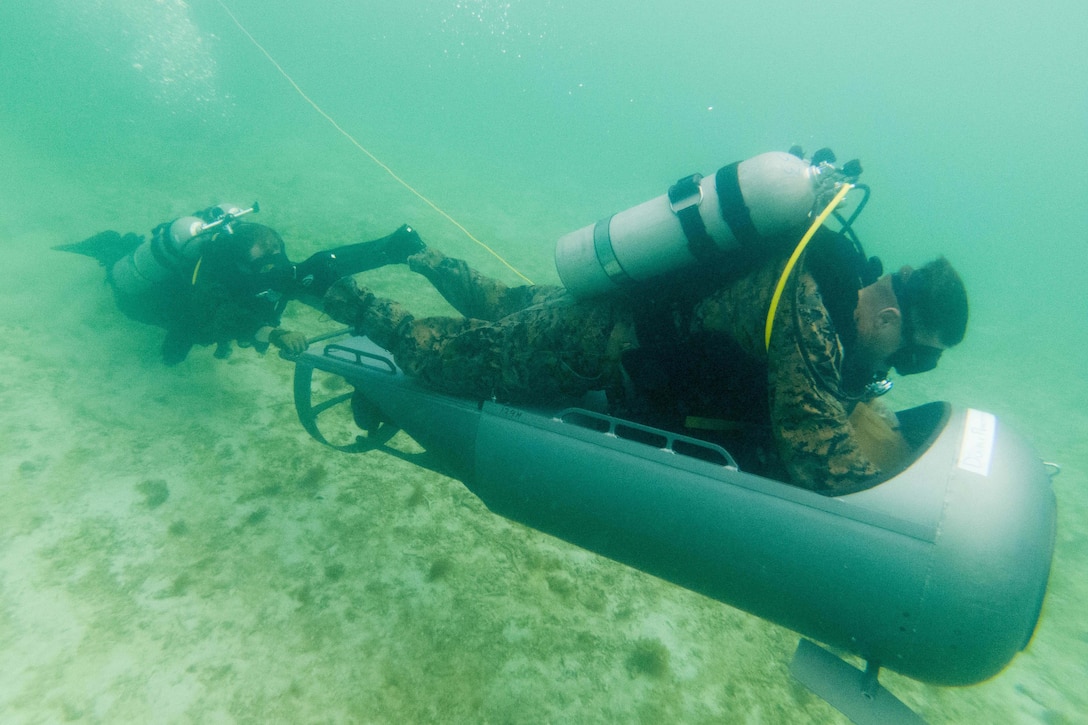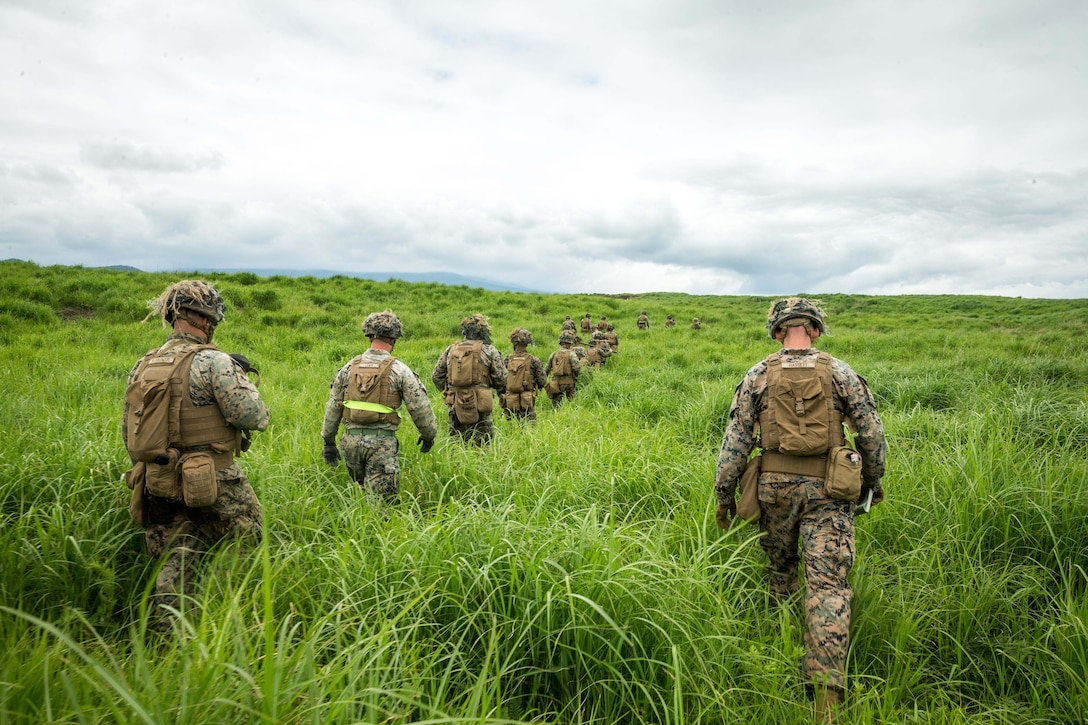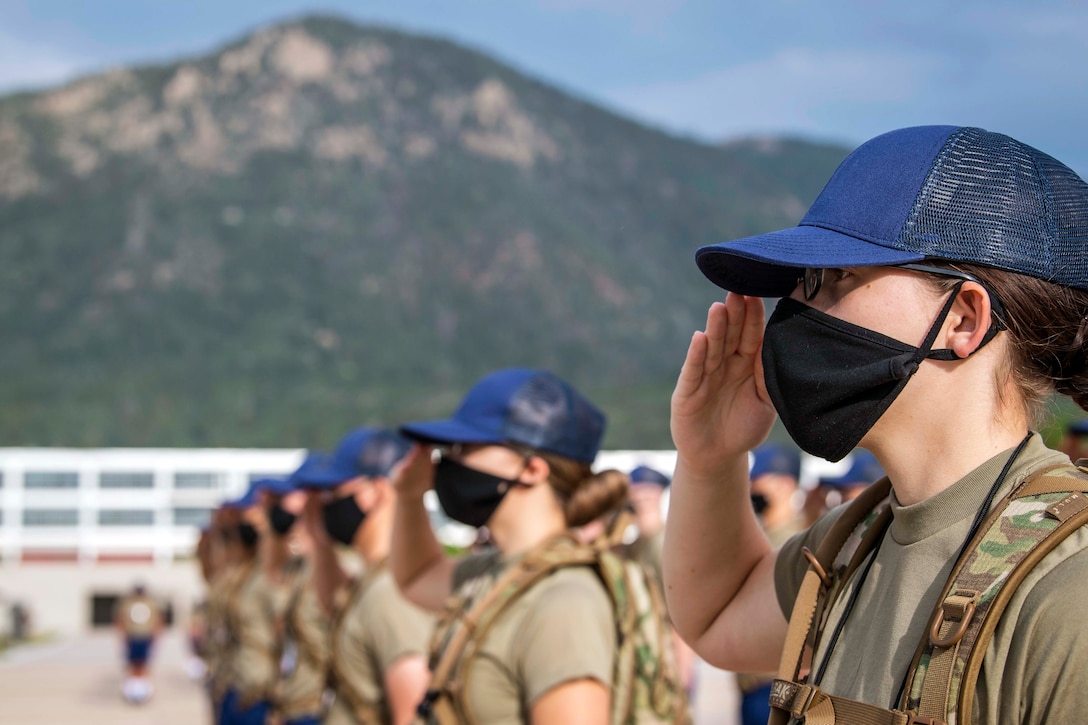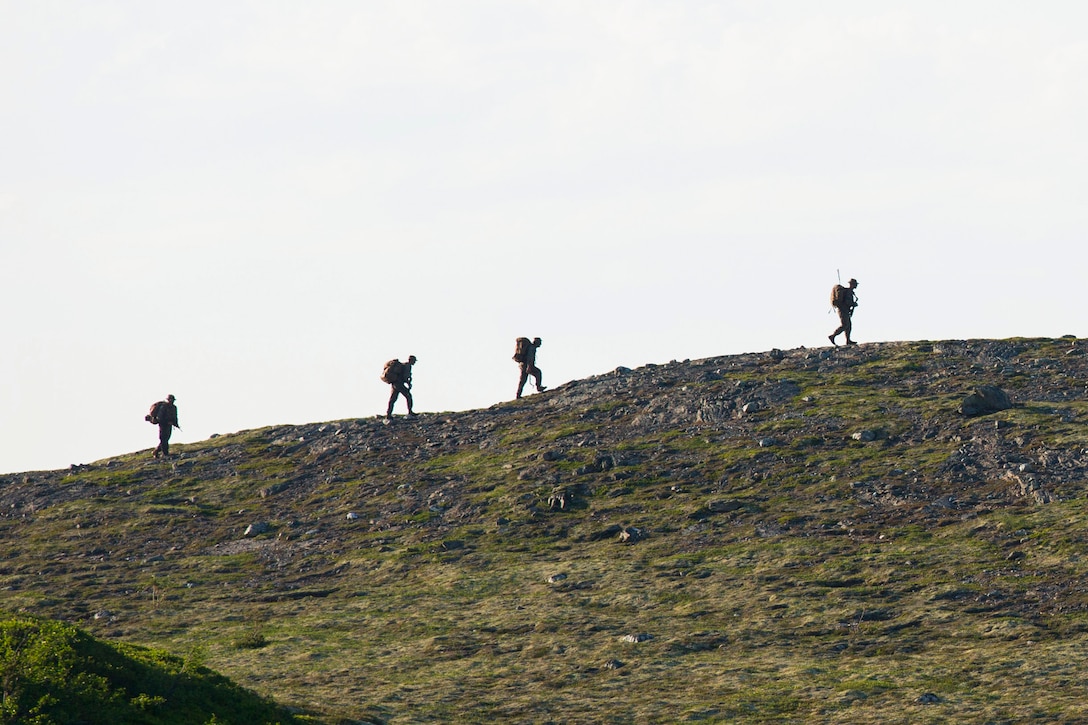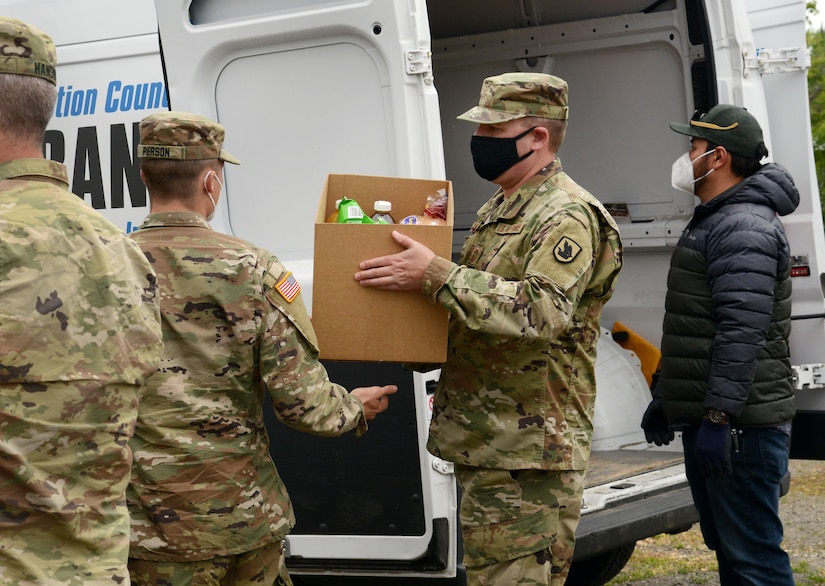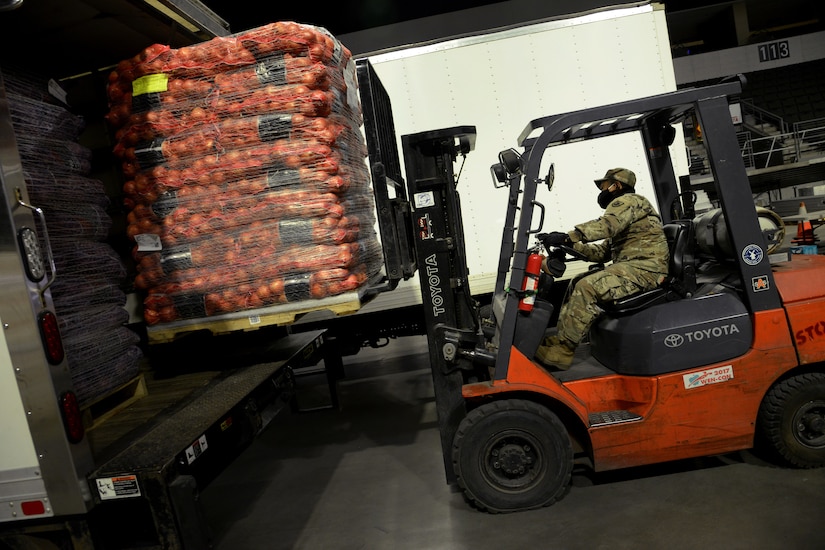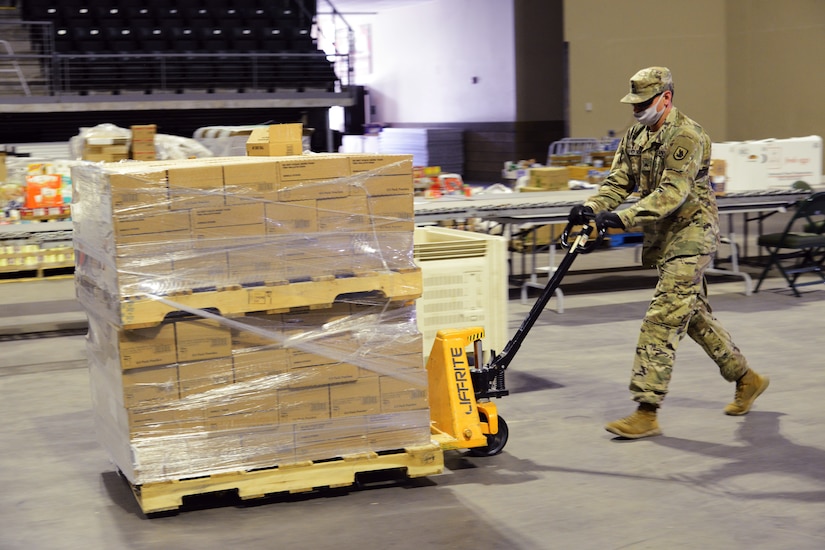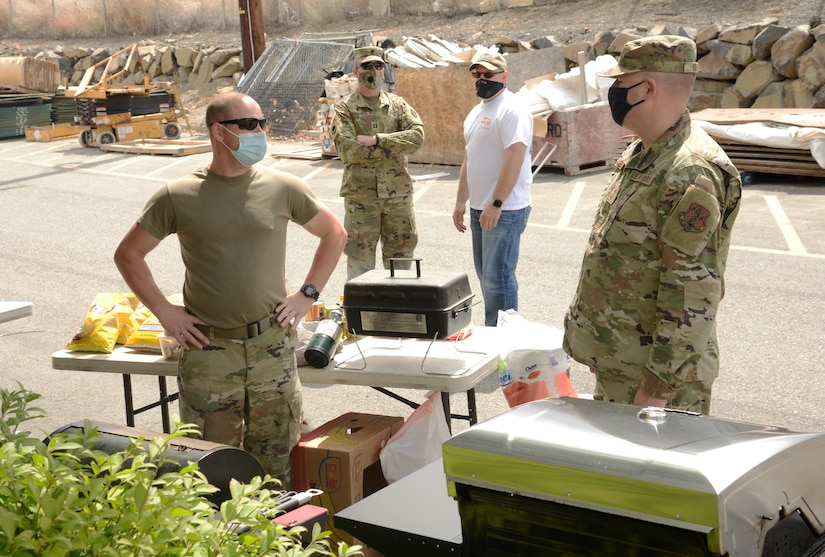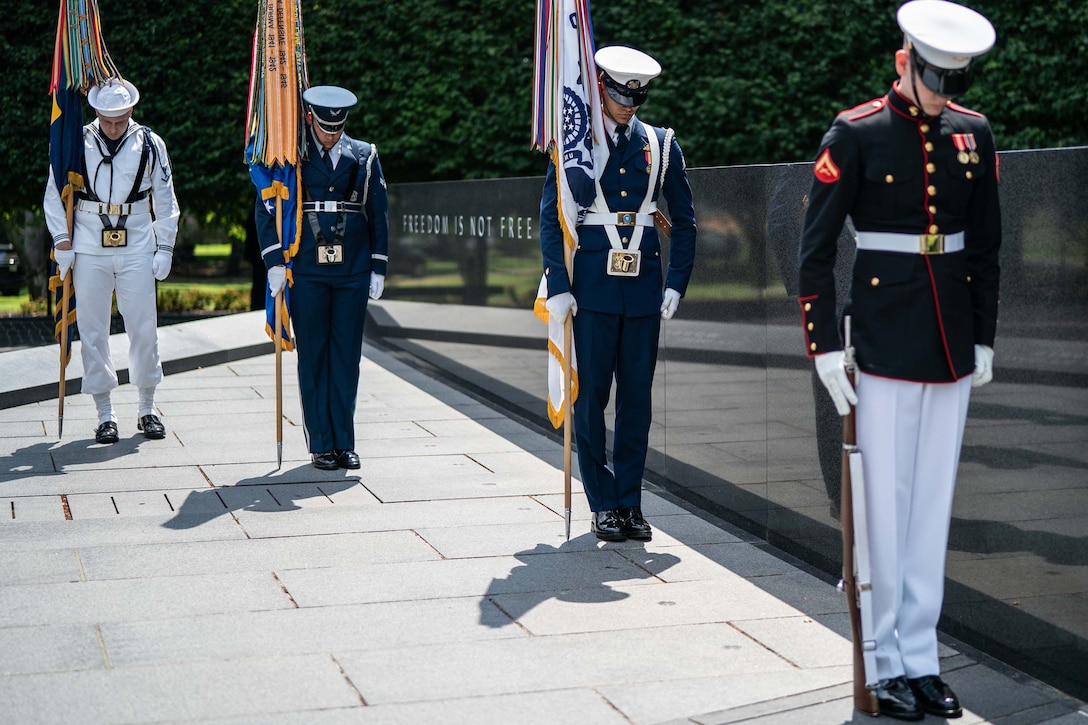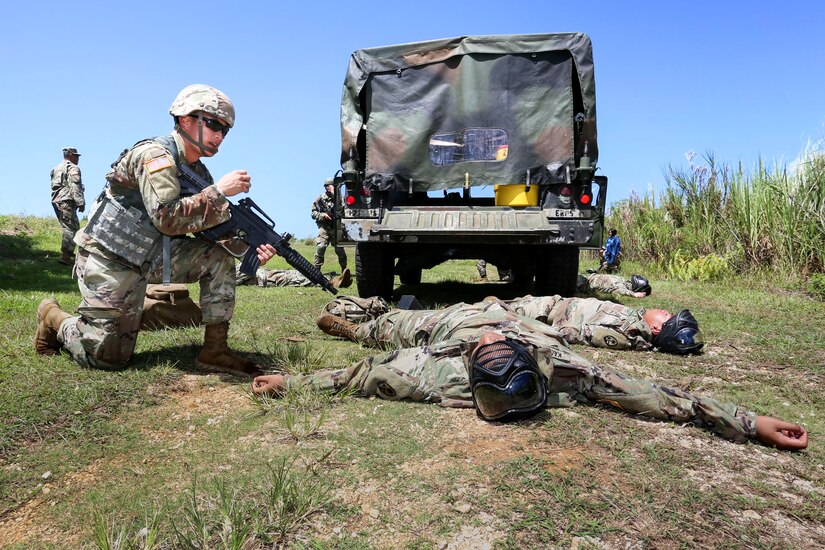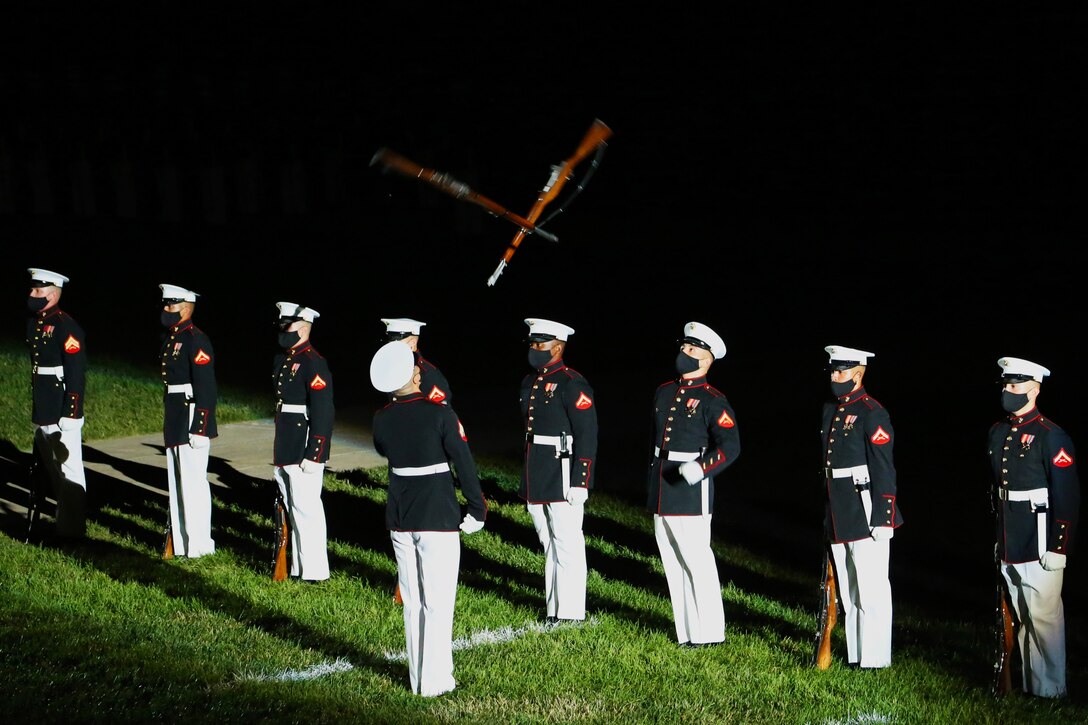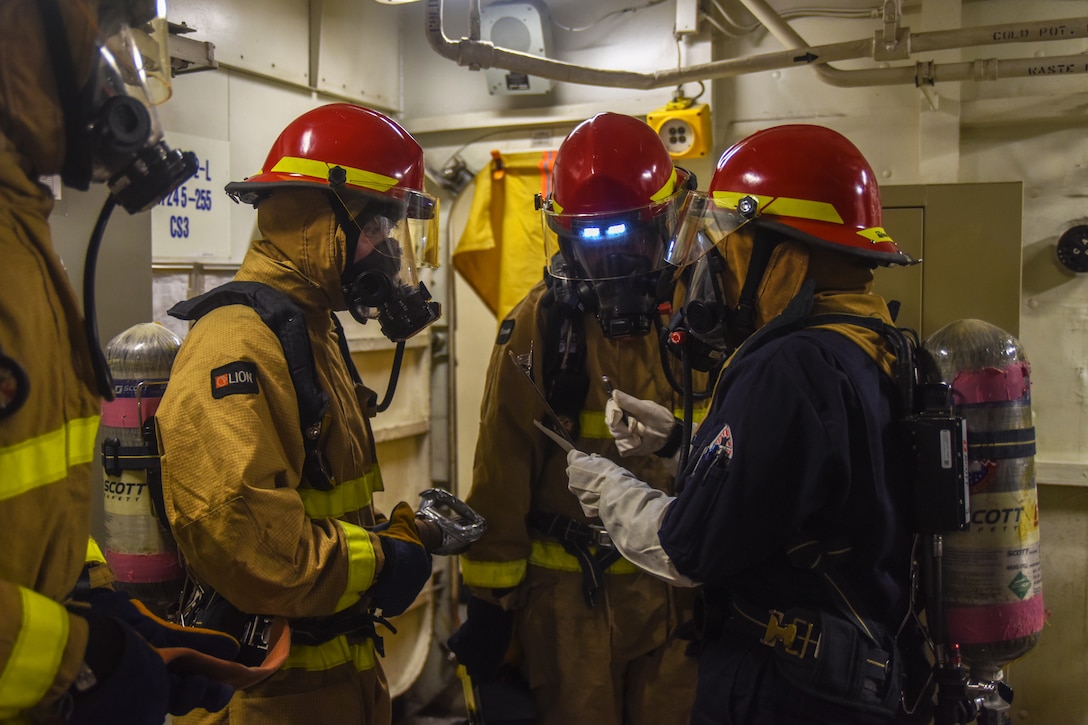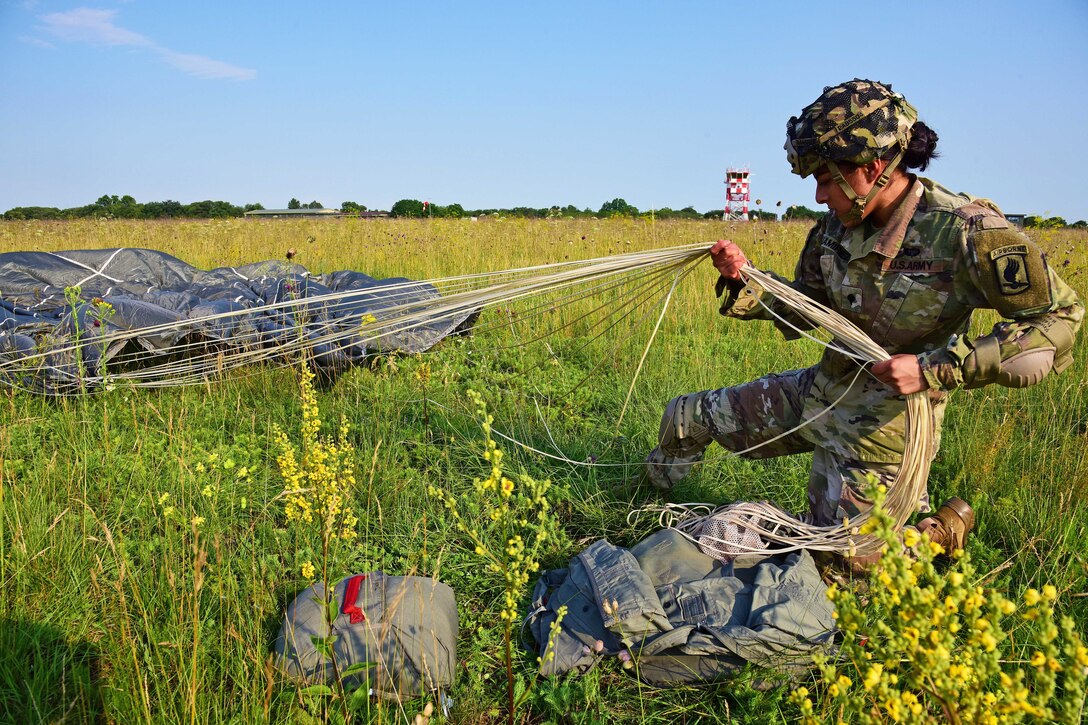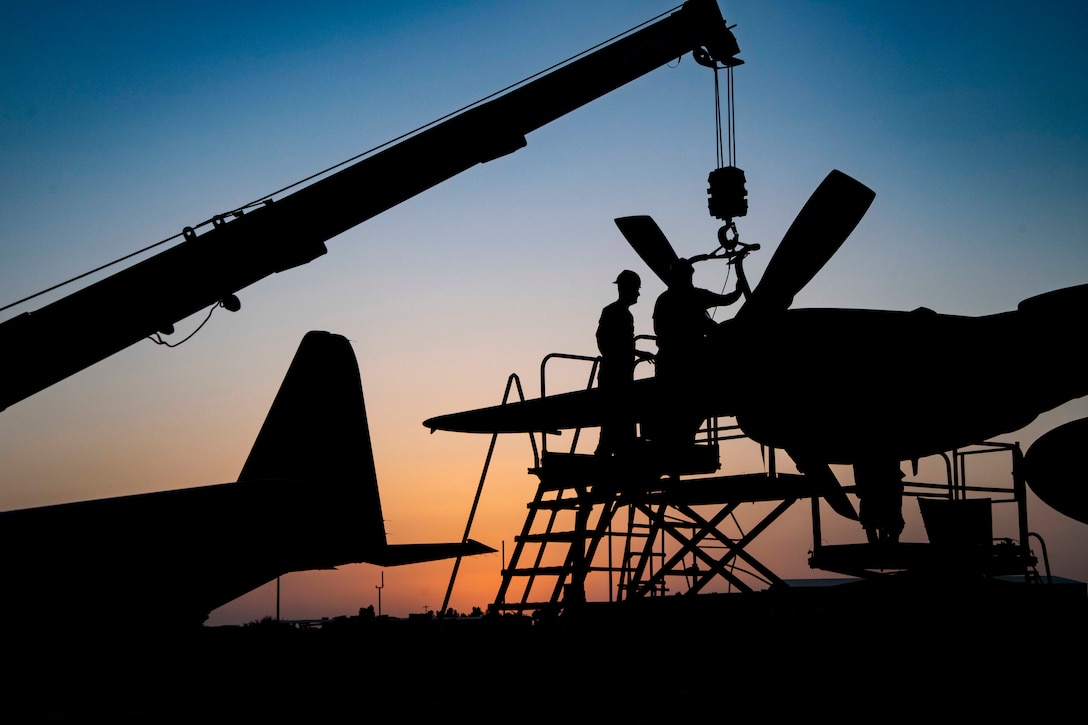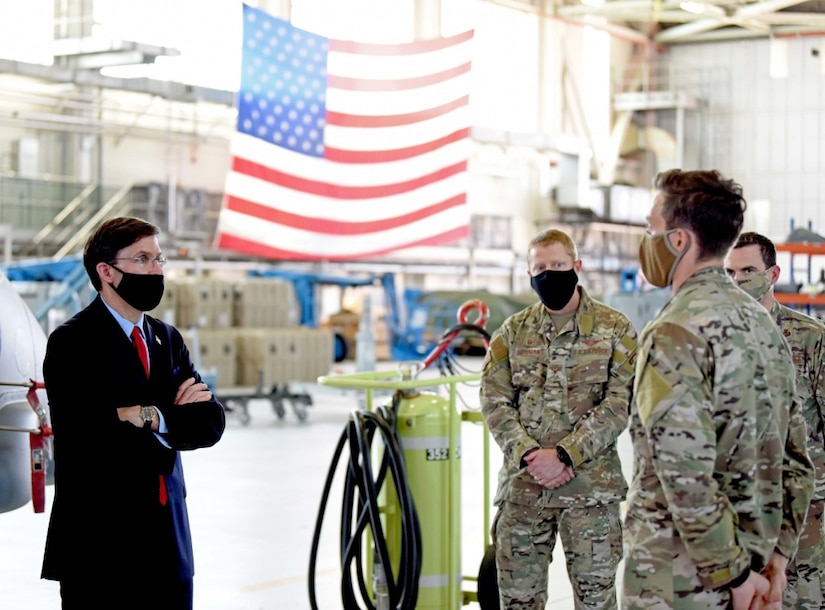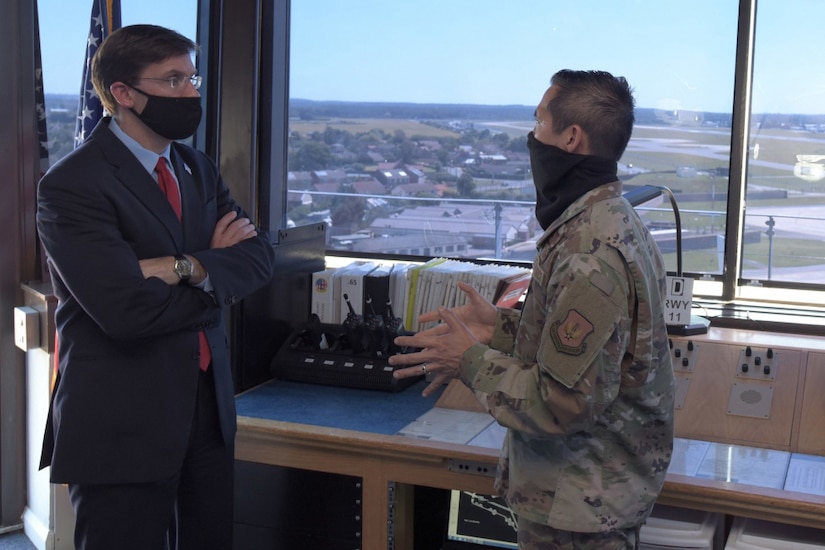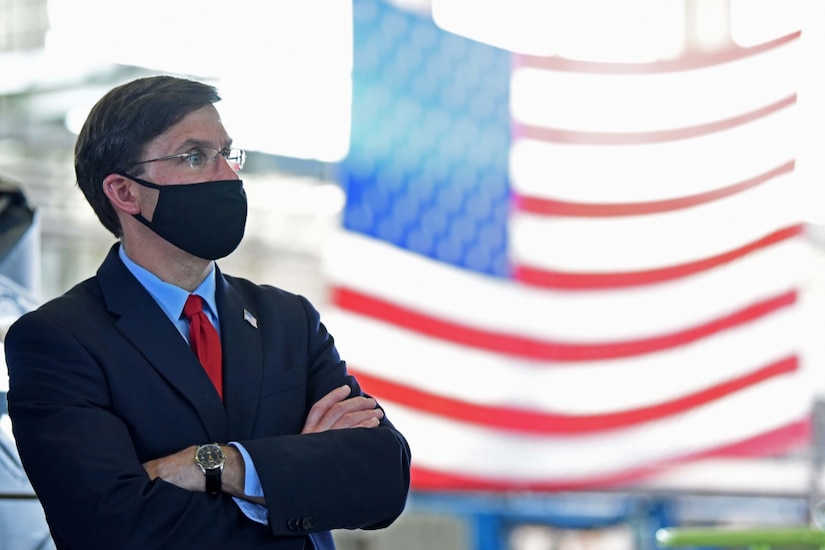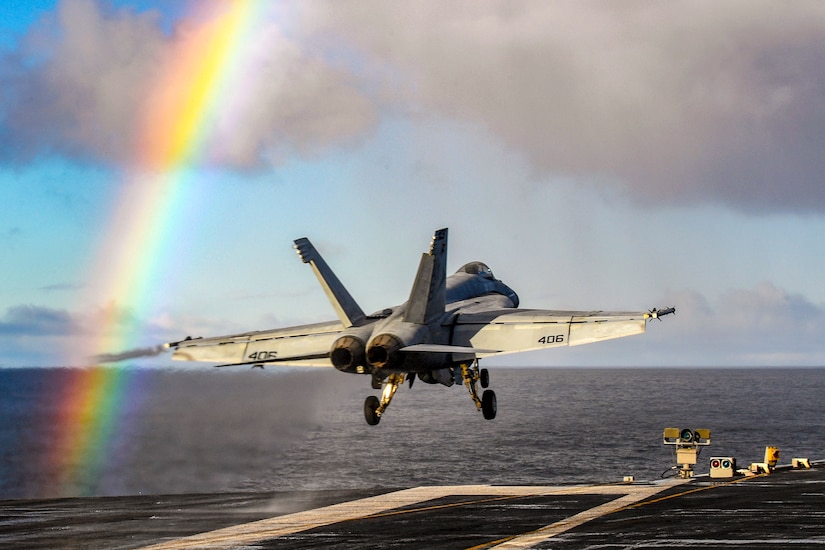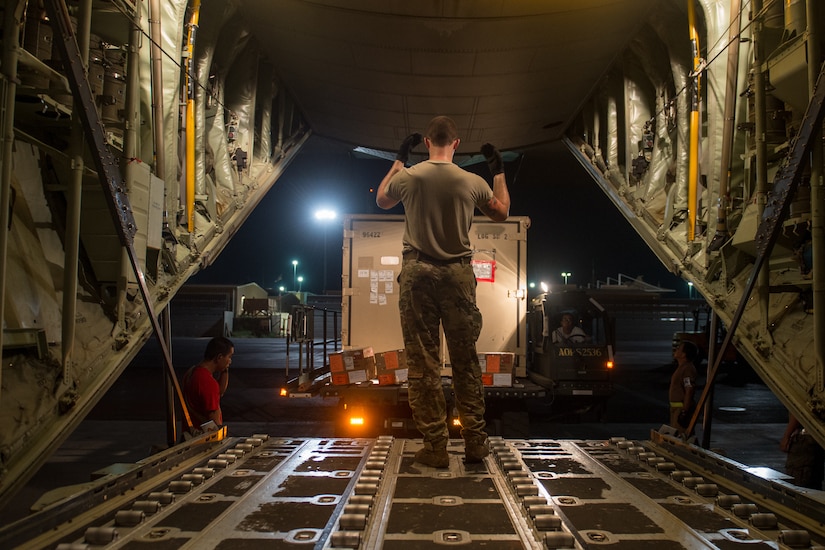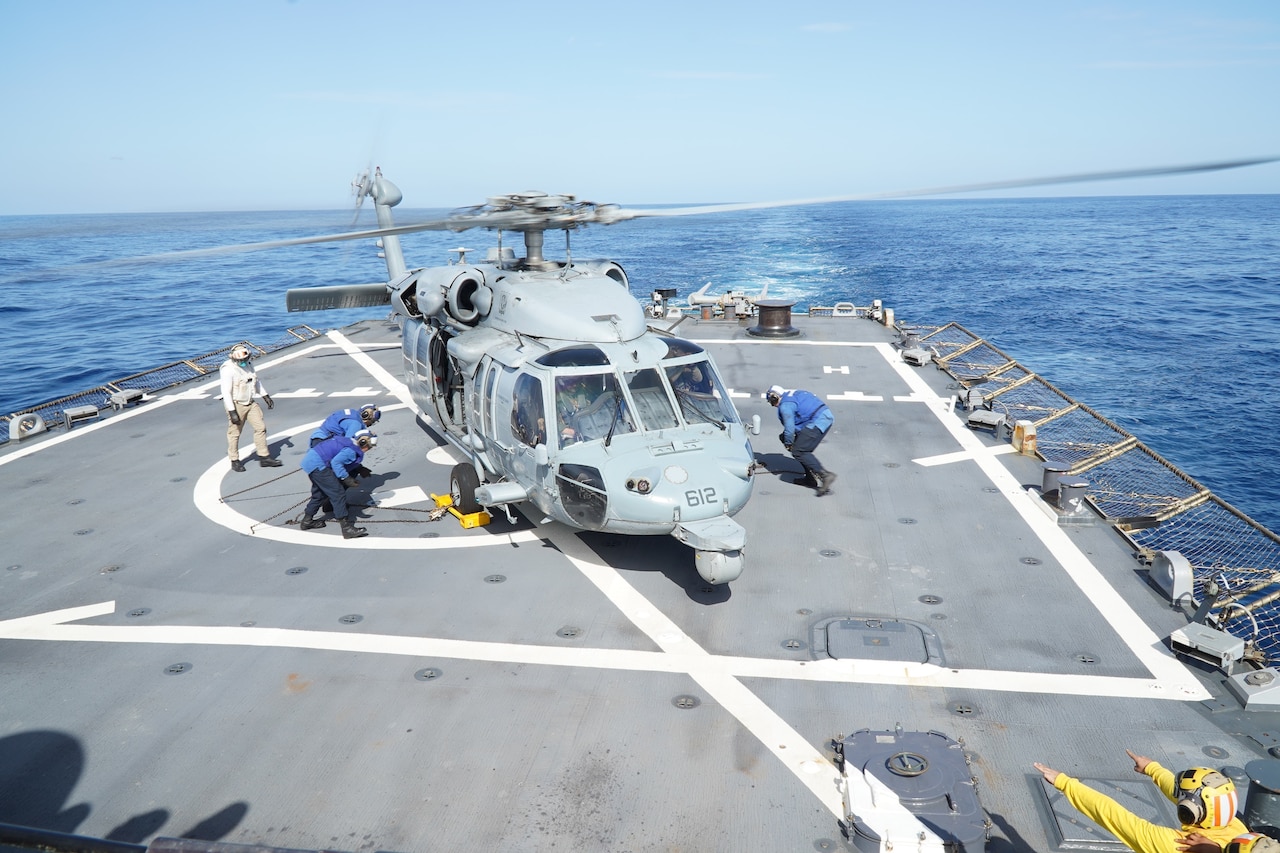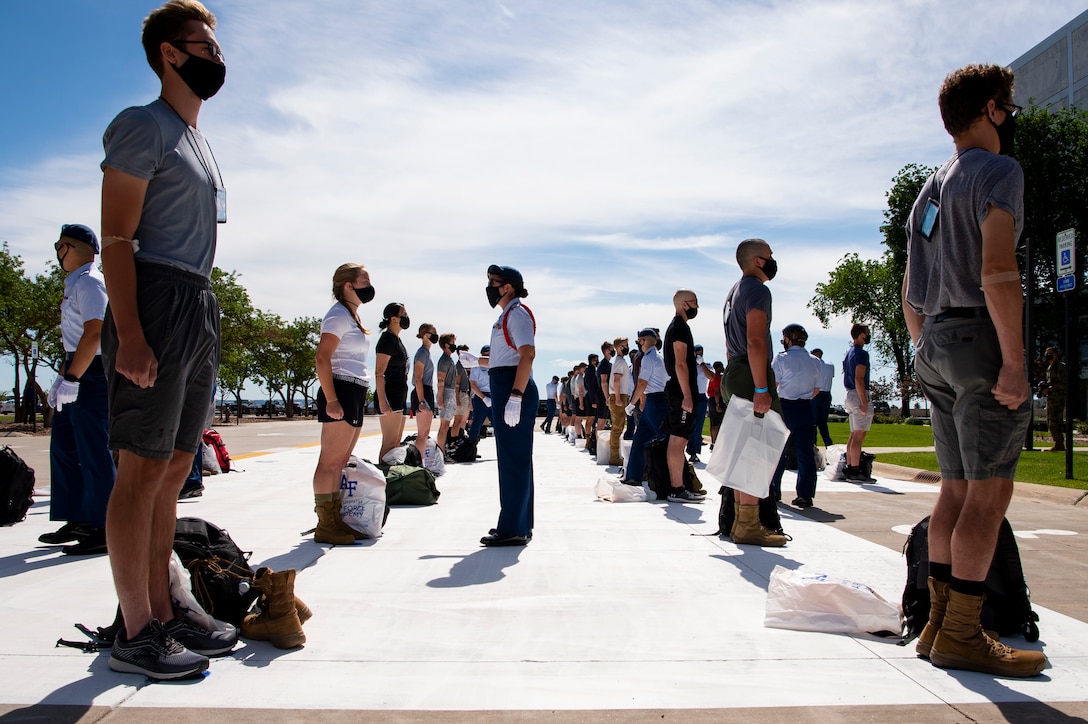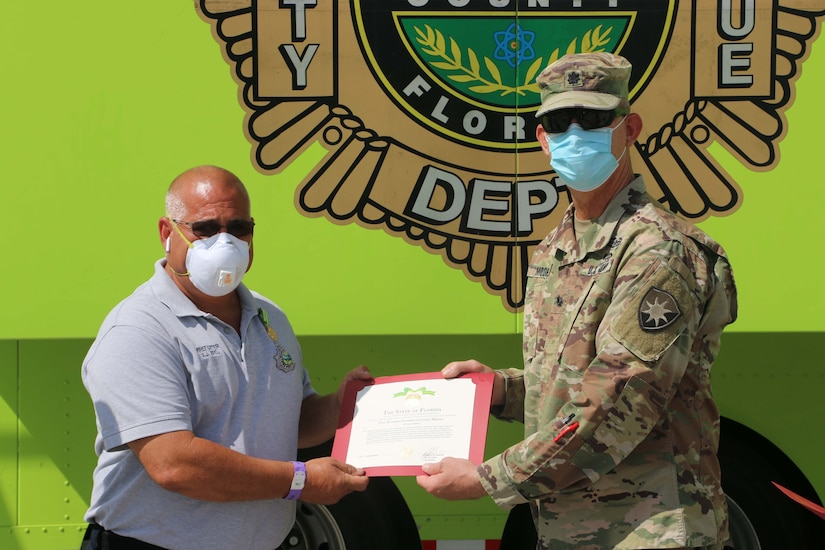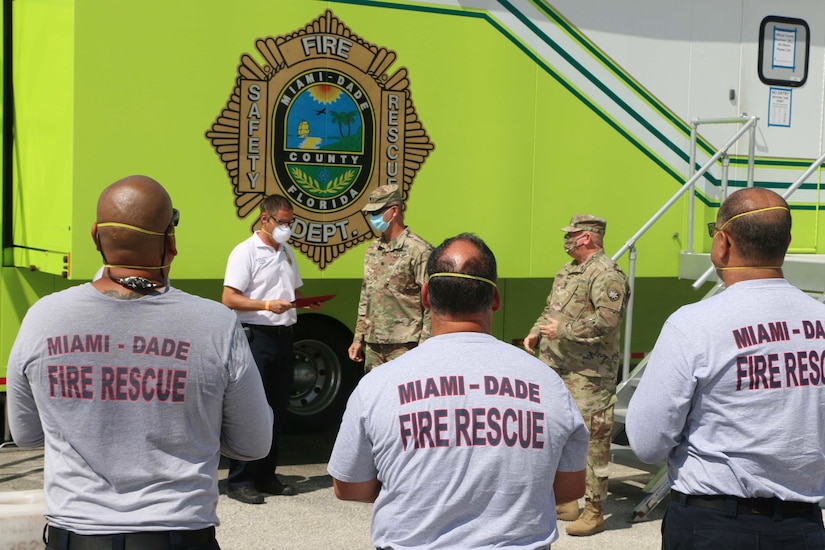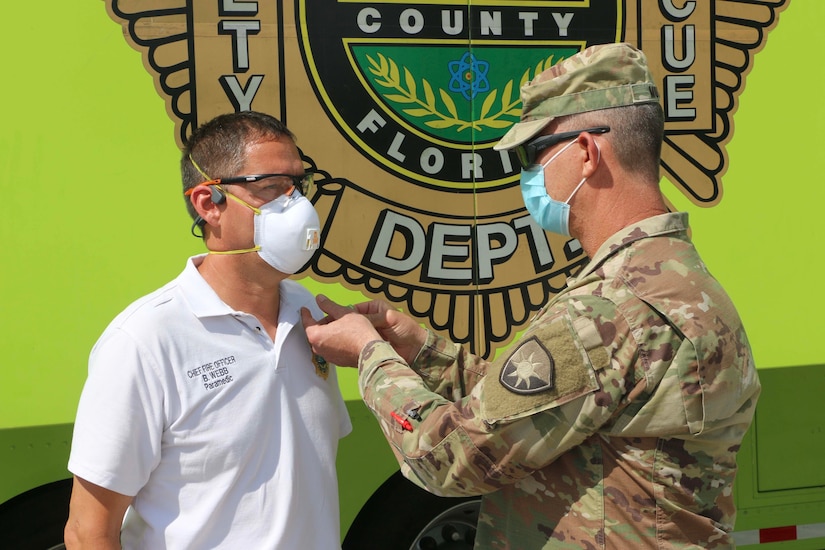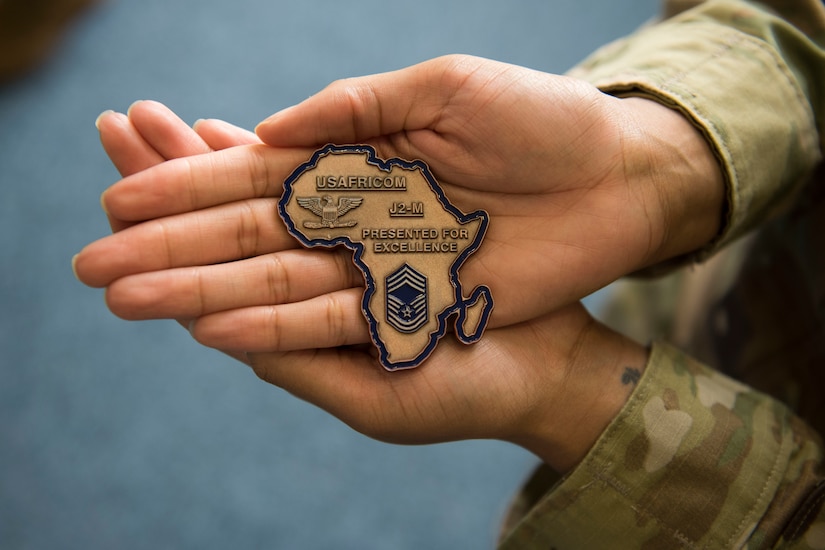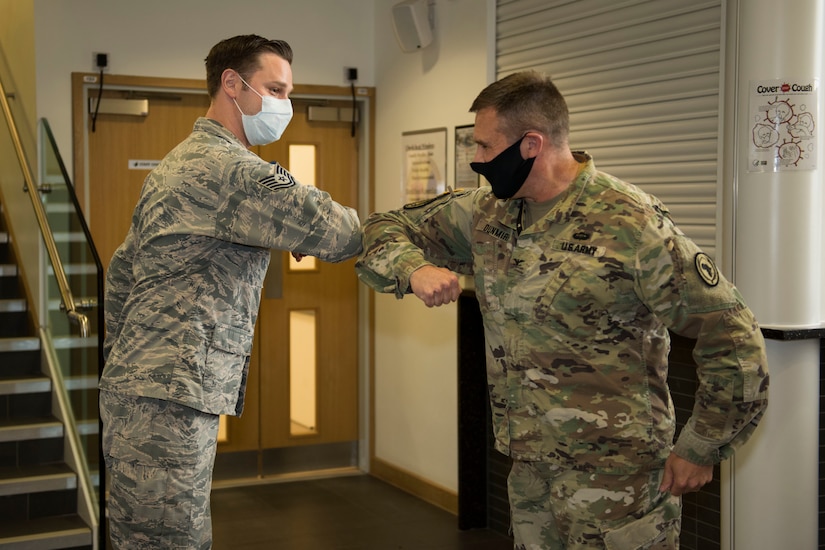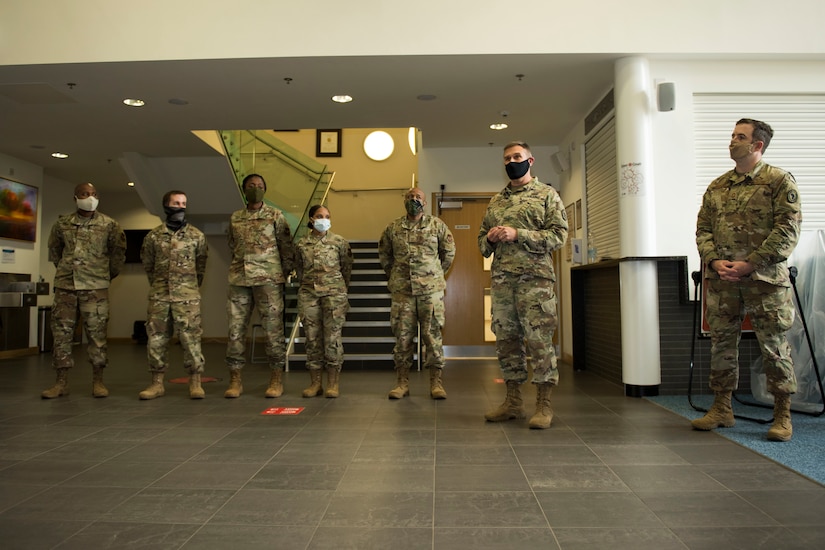June 29, 2020
|
BY AIR FORCE MASTER SGT. JOHN HUGHEL
The diverse and ever-changing backdrop of high
plains, river basins, vineyards and vibrant groves in the Yakima Valley
of central Washington rivals the setting to John Steinbeck’s novel,
''East of Eden.'' Its beautiful and expansive — yet toilsome —
landscapes shape the hopes and burdens of those who live there.
Upon arriving in Pasco, just east of the Yakima Valley region, Army
Chaplain (Maj.) Jeffrey Forshee, with the Army National Guard, and Air
Force Senior Master Sgt. Robert Boleak of the Air National Guard arrived
at one of the 50-plus state food banks supported by Washington National
Guardsmen to aid Washingtonians in overcoming food constraints due to
the economic fallout triggered by the COVID-19 pandemic. In a place of
such abundance, the need for essential sustenance seems to be the
greatest.
''We've been visiting a lot of these food banks as we connect to our
service members and the civilian staff supporting these important
missions,'' Forshee said. ''This is an unexpected need during these
unprecedented times.''
Forshee and Boleak are part of Joint Task Force Steelhead's staff,
leading the religious affairs team, operating both as spiritual leads
and the eyes and ears to the members in the field.
''I found that being able to communicate back to the staff at JTF
when we've spent time at one of these spots is incredibly
valuable,'' Boleak said. ''Oftentimes, information is not being passed
down to our soldiers and airmen at some of our sites, which only adds to
some of the distress with our [service] members.''
In many ways, the religious affairs team attempts to encounter this
new level of anxiety in which basic and previously held assumptions are
challenged due to the sudden shift in conditions. The new normal shows
that resilience and perseverance have become sacrosanct.
''There are a variety of concerns that our members have that are
directly related to the COVID-19 response,'' Forshee said, detailing
some of the underlying concerns and questions by service members. ''If
leaders are tracking their questions and concerns, if there are too many
or too few soldiers on a site, and what are the current guidelines or
updates for a safe workplace.''
You see it instantly on some of the faces when we load a box of food and offer encouragement.''
Army 2nd Lt. Will Stryker
When the religious affairs team arrives at the locations where
guardsmen are working, Boleak quickly jumps in to lend a hand, whether
it is unloading a food truck or helping to set up tables at mobile
distribution sites. It gives him a chance to make an instant connection
and get a sense of the team's morale.
''We get out about three or four times a week,'' he said. ''I see it
as a way to build camaraderie and letting them know that we're here to
support them and any needs they have, as well as someone who cares about
their well-being.''
Forshee perceives the site visits as being more genuine and focused
than traditional religious services while meeting the guardsmen's needs
in real time.
''Going out to meet soldiers and airmen is much more rewarding
because when we arrive we can encounter them in many ways,'' Forshee
said. ''It could be a group or just one on one, but often in unscripted
moments.''
As soldiers and airmen work the food banks, testing locations and
other critical COVID-19 response sites, they are personally interacting
with communities experiencing economic distress and escalating fears of
the virus. Knowing they are making an immediate impact is not lost on
them.
''You see it instantly on some of the faces when we load a box of
food and offer encouragement,'' said newly commissioned Army 2nd Lt.
Will Stryker, the soon-to-be officer in charge of the Wenatchee mission.
''The first day I worked here in early May, we filled up the parking
lot, and then it became twice over that within a few weeks, only to have
it continue to grow as more and more people needed assistance.''
While attending Central Washington University, Stryker was activated
while still a cadet. Now, since his June 12 commissioning, he's ready to
take on the added responsibility for his crew, maintaining the demands
and tempo for those in his immediate community.
''We've seen that while COVID is continuing along its course, more
and more people who have dipped into their reserves are starting to need
additional assistance,'' he said, while watching his teammates use
forklifts to unload a truckload of potatoes, canned goods and other
nonperishable items into the vacant hockey area. ''When I look at these
stands and know that they normally would be full of fans cheering on the
'Wenatchee Wild,' it is oddly surprising to be in the center of the
floor, and have it be so quiet other than us moving pallets of food
in.''
At the end of the day, I think all of us can feel good about lending a hand while doing the people's work.''
Air Force Senior Master Sgt. Robert Boleak
More than 30 soldiers are responsible for this site. Stryker said
that he's lucky to have a solid group of noncommissioned officers and a
team that is so dedicated to this work.
''There are [military police], truck drivers, cooks, mechanics and infantrymen; it's an awesome crew,'' Stryker said.
As the food bank needs continue, several sites have added and rotated
new members into the ranks. By late May, Army Chaplain (Capt.) Michael
Johnson swapped places with Forshee, while embracing the same role of
intermingling with troops across the state. After the last truck was
unloaded at the arena in Wenatchee, the soldiers took part in a
barbecue, allowing Johnson an opportunity to address the team while
enjoying the camaraderie.
''I definitely got here on the right day,'' Johnson said. ''As a
Baptist pastor, potlucks are a really big thing. If there's food, we
will be there,'' he said, while jokingly speaking to everyone enjoying a
well-deserved break in their hectic schedule.
''Thank you guys for what you are doing. If there's something that we
can do for you or your immediate family members, we want to help,'' he
said. ''It can be anything, even as a sounding board — we're there for
you. Chaplains and assistants, we're here to serve you, and we're so
glad to be part of this generous team.''
Johnson said he sees some of the same concerns in his community
church in Yakima when he's not in uniform. Yet from a personal
perspective, he noted that his path to becoming a chaplain came from
financial uncertainty earlier in life.
''I was married [with] three kids and asked myself, 'What’s going on
here?''' Johnson said, explaining how he enlisted in the active duty
Army when trying to make a living as a musician.
''The part-time jobs, the gigging musician or being a music teacher,
it all wasn't adding up, especially at the end of every month,'' he
continued. ''That's when I discovered the Army Band, it was the right
fit at the right time, and I went for it.''
After 10 years, he made another leap, leaving his successful music
career and the full-time Army life to come back to Washington and follow
another new path of ultimately becoming a chaplain.
''My experience in the Army during an uncertain period in life helped
me on a personal level, and it provided the means for my
family,'' Johnson recalls. ''It's made me realize now that being a
chaplain is who I really am, it fits my calling to help soldiers on the
religious and spiritual needs: it's the 'whole person approach' to
soldier care.''
The demand to support Washington communities as large as Seattle and
as small as Touchet seems to be unending, especially in the realm of
food sustenance and COVID-19 testing sites across every region of the
state. Since March, more than 1,000 Washington National Guardsmen have
activated to support the global pandemic response. To date, nearly 28
million pounds of food has been processed, packed and distributed by
Evergreen Guardsmen.
''I know for many residents, the ongoing need for these food banks is
vital,'' said Claudia Limon, a service coordinator with the Blue
Mountain Action Council.
The BMAC is a nonprofit, multipurpose agency, serving residents in
Southeastern Washington that helps strengthen self-sufficiency, develop
strategies to prevent poverty and leverage community support through
volunteerism. They have teamed up with the guardsmen to keep up with the
increasing nourishment needs.
A group of a dozen guardsmen have arrived in the town of Touchet,
setting up tables and an entry control point as they load car after car
with pre-assembled boxes of food.
''We couldn't do this without the help from the National
Guard,'' Limon said, directing the long line of cars, amassed along the
main roadway leading up to the mobile food bank. ''This has been a
terrific partnership, especially with the need being so great.''
As Boleak helps stack boxes from one of the many trucks for this
weekly distribution mission, he quietly goes about his routine of
jumping in and offering a hand.
''At the end of the day, I think all of us can feel good about
lending a hand while doing the people's work,'' he said, ''It all comes
down to neighbors helping neighbors.''
(Air Force Master Sgt. John Hughel is assigned to the Washington Air National Guard.)
